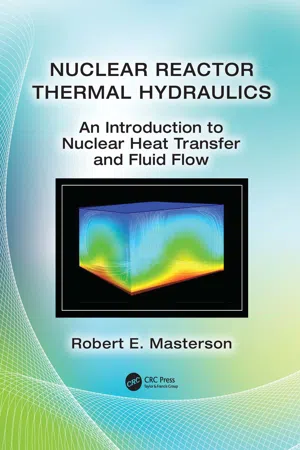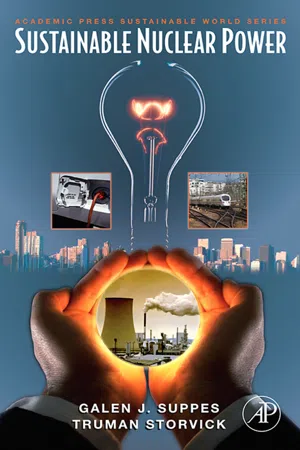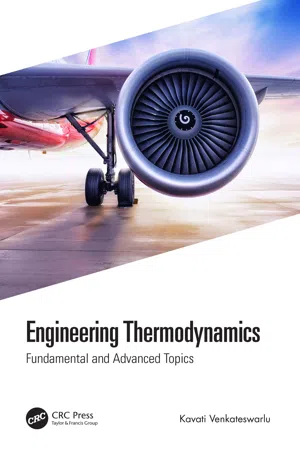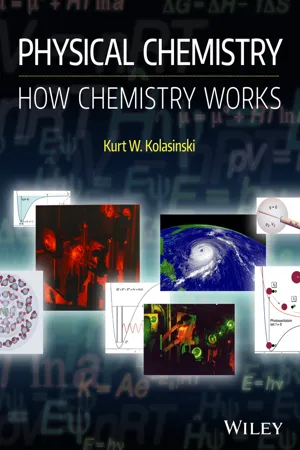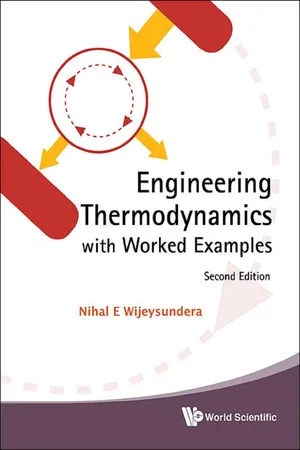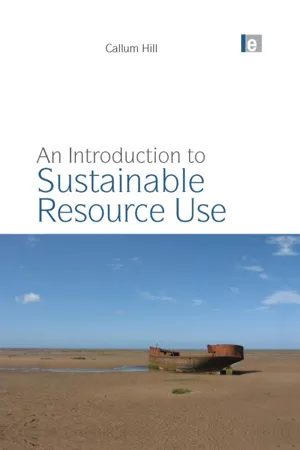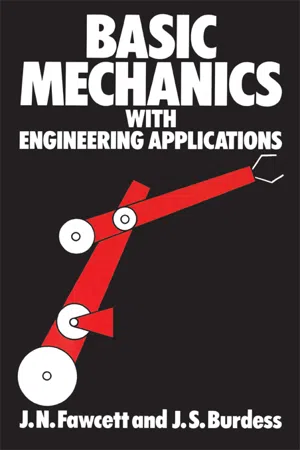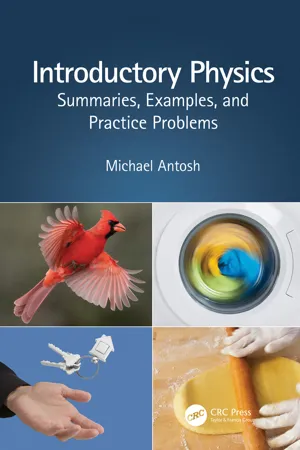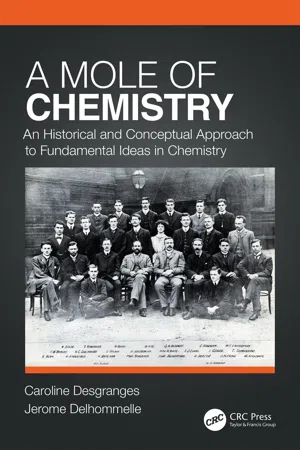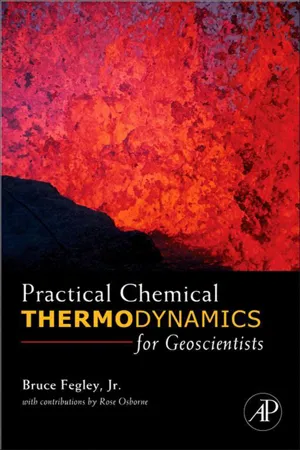Physics
Work in Thermodynamics
In thermodynamics, work refers to the transfer of energy from one system to another through the action of a force. It can take various forms, such as mechanical work, electrical work, or pressure-volume work. Work is a crucial concept in understanding the behavior and transformations of energy within thermodynamic systems.
Written by Perlego with AI-assistance
Related key terms
Related key terms
1 of 4
Related key terms
1 of 3
11 Key excerpts on "Work in Thermodynamics"
- eBook - ePub
Physics of Cryogenics
An Ultralow Temperature Phenomenon
- Bahman Zohuri(Author)
- 2017(Publication Date)
- Elsevier(Publisher)
These may be called energy transfer or energy interactions and they bring about changes in the properties of the system. Positive work occurs when the system transfers energy to its surroundings by some mechanical or electrical process. Positive heat transfer occurs when the surroundings transfer thermal energy to the system. Normally a temperature difference is the driving potential that moves thermal energy into or out of a system.4.2. Definition of Work
The formal definition of work is “a force acting through a distance.” When a system undergoes a displacement due to the action of a force, work is taking place and the amount of work is equal to the product of the force and the displacement in the direction of the force. The term work is so common with many meanings in the English language that it is important to be very specific in its thermodynamic definition.4.2.1. Work Is Done by a Force as It Acts Upon a Body Moving in the Direction of the Force
If the force acts, but no movement takes place, no work is done. Work is performed by the expanding exhaust gases after combustion occurs in a cylinder of an automobile engine as shown in Fig. 4.1 . In this case the energy produced by the combustion process can be transferred to the crankshaft by means of the connecting rod, in the form of work. Therefore, the work can be thought of as energy being transferred across the boundary of a system, the system being the gases in the cylinder.A similar concept is the work done in the turbine to generate electricity in a nuclear power plant. The gas pressure rotates the turbine blades producing a torque that turns a generator. Thermal energy is transferred from the reactor core to the steam generator in the first loop. The second loop then uses this steam to drive the turbine. See Fig. 4.2 - eBook - ePub
Nuclear Reactor Thermal Hydraulics
An Introduction to Nuclear Heat Transfer and Fluid Flow
- Robert E. Masterson(Author)
- 2019(Publication Date)
- CRC Press(Publisher)
frictional work performed by the ball. In other words, friction causes some of the kinetic energy of the ball to be converted into thermal energy or heat. This observation is another statement of the first law of thermodynamics. [Ans.]6.23 The Definition of Work
Classically, work is a form of energy transfer that occurs when some energy is transferred from one material to another. This energy can take the form of potential energy, kinetic energy, or even heat energy. In Newtonian mechanics, work is defined as the product of a force F and the distance d over which the force is applied, which is given by the following equation:The Definition of Work
(6.27)Work = Force × distanceW = F ⋅ d (in J)where d is the distance traveled. In elementary calculus, it is also defined as “the integral of the force over a distance of travel.” So if the force varies as a function of distance, then a more appropriate definition for the work isW =(6.28)∫F(r) r drwhere r is the distance. According to this definition, an object has to move for mechanical work to be performed (see Figure 6.12 ).Example Problem 6.7
A piston in an internal combustion engine used to pump the air through the ventilation system in a nuclear power plant moves a mass of 10 kg a distance of 1 m in the vertical direction with an acceleration of 15 m/s2 . How much work does the piston do in the process of moving this mass?Solution The work the piston performs is given by W = F × d, where F is the applied force and d is the distance through which the force is applied. In this case, the force is given by F = ma = 150 kg m/s2 = 150 N. The work performed is then W = F × d = 150 J . [Ans.]FIGURE 6.12 - eBook - ePub
- Galen J. Suppes, Truman Storvick(Authors)
- 2006(Publication Date)
- Academic Press(Publisher)
It took a new generation of scientists to finally end the arguments of those who could not accept this principle of energy conservation. The concept is now stated as the postulate energy is conserved. It is a cornerstone of classical physics that has been elevated in status and is the first law of thermodynamics. Classical thermodynamics is an exact mathematical structure that describes the behavior of gases, liquids, and solids as the temperature, pressure, and composition change. The simple form of these mathematical relationships was established using experiments performed to improve the design of engines that convert thermal energy to work. The theory applies equally to energy conversions involved in heating and cooling a house, conversion of energy from coal combustion to electricity, combustion of gasoline to power an automobile, and the food you eat converted to the energy you use to walk and talk. Our narrative will proceed with some examples of tasks we understand as work. These examples will give us a quantitative definition of work, and we can then assign numerical units to energy. We will show how any gas can be used to do work. We then show how we can use water as a liquid and vapor (steam) as the fluid to accept thermal energy, do work, and then reject some thermal energy to complete the work-production cycle. Today’s machines that convert energy to work all use this basic principle. The Concept of Work Everyone understands that work is the use of energy to perform a task. It is work to lift a box from the floor to a table. Shoveling sand or snow is work. When we carry a bag of groceries from the store to the parking lot, it is work. All tasks we do that have us moving an object from one place to another we understand to be work. When we repeat the task several times, we need rest, and we need food to restore the energy we used performing those tasks - eBook - ePub
Engineering Thermodynamics
Fundamental and Advanced Topics
- Kavati Venkateswarlu(Author)
- 2020(Publication Date)
- CRC Press(Publisher)
In engineering thermodynamics, the focus will be on work-producing devices such as internal combustion engines and turbines. Hence, it is always suitable to consider such work as positive. That is, the work done by the system is positive, and the work done on the system is negative. In certain cases, however, it is convenient to regard the work done on the system to be positive. To reduce the possibility of misunderstanding in any such case, the direction of energy transfer is shown by an arrow on a sketch of the system, and work is regarded as positive in the direction of the arrow. It is necessary to know how the force varies with the displacement. This brings out an important idea about work.3.8 First Law of Thermodynamics
The first law of thermodynamics (conservation of energy principle) establishes the relationships among the various forms of energy and energy interactions such as heat Q and work W during a process. The first law of thermodynamics states that energy is neither created nor destroyed during a process; it gets transformed from one form to the other. When an electrical energy is supplied to a motor, it will rotate a pump circulating the fluid. In this case, electrical energy is converted to kinetic energy (rotation of the shaft). A speeding vehicle possesses kinetic energy, if the brake is applied it comes to rest slowly and at rest, it possesses potential energy. The loss in kinetic energy equals the increase in potential energy when the air resistance is negligible, thus confirming the conservation of energy principle for mechanical energy.The conservation of energy principle can be demonstrated with the help of the processes that involve either heat or work interactions or simultaneous heat and work interactions as well. In one case, we consider a process that involves heat transfer but no work interactions such as heating of a metal bar in a furnace. Owing to heat transfer to the metal bar, its energy increases. The increase in the total energy of the metal bar will be equal to the amount of heat transferred to it. Similarly, in the case of heating of water in a steam boiler, if 100 kJ of heat is transferred to the water from the furnace and 10 kJ of it is lost from the water to the ambient surroundings, the increase in energy of the water becomes equal to the net heat transfer to water, i.e., 90 kJ. - eBook - ePub
Physical Chemistry
How Chemistry Works
- Kurt W. Kolasinski(Author)
- 2016(Publication Date)
- Wiley(Publisher)
This is the case whenever the system is a conservative system. When some or all of the forces acting in the system are not derivable from potentials, the system is dissipative. In mechanical systems this arises, for example, when friction is present. When we speak of thermodynamic systems in general, we find that typically the forces are not derivable from potentials. Therefore, we must discuss the general case of thermodynamic work treating it as an inexact differential. Now we turn to thermodynamic work. One of the most frequently encountered forms of work for chemical systems is the expansion of a gas against an external pressure p ex, also known as pV work. In calculating thermodynamic work, we need to take account of the sign convention imposed by the First Law of Thermodynamics: when the system performs work on the surroundings, its internal energy must go down and the sign of work is negative. Let us assume that p ex is applied uniformly over our system (say an ideal gas contained in a box with one movable wall). The infinitesimal work done when the volume changes is (7.9) The negative sign must be inserted to enforce compliance with the First Law: expansion must lead to negative work. We confirm this by performing the integration. If the volume changes from its initial value V i to a final value V f, then the total work is (7.10) For a constant external pressure, we again move the constant out of the integral and evaluate explicitly, Isobaric work: (7.11) Consistent with the First Law, expansion corresponding to Δ V > 0 leads to w < 0. Similar to pV work, surface expansion work is given by the product of the surface tension γ and the surface area σ (7.12) Work can be done by moving electrons. This is one of the most common forms of non- pV work. The electrical work of transporting electrical charge Q through an electrical potential φ is (7.13) This is equivalent to the work performed to charge a capacitor at the applied potential difference φ - eBook - ePub
- Nihal E Wijeysundera(Author)
- 2016(Publication Date)
- WSPC(Publisher)
chapter 1 on the attributes of properties, we conclude that the kinetic energy is a property of the body.To evaluate the work done on the body, using the left hand side of Eq. (3.2) , we need to know how the force F varies with the displacement x . Therefore, the work done by the force is, in general, path-dependent. However, for certain forces like the gravitational force, the work done in moving the body from one point to another is independent of the path followed. Such a force is called a conservative force .The vector form of the expression for work done can be written aswhere F and are the force and position vectors respectively. The work, W however, is a scalar quantity. Note that the common units of work may be expressed as: [W ] = Nm (Newton-meter) = J (Joule).3.2Work Interactions in Thermodynamics
The interactions of a thermodynamic system with its surroundings occur at the system boundary. These interactions are usually the result of pressure forces, electrical currents, surface tension forces and others. For a concise formulation of the laws of thermodynamics we categorize all boundary interactions under two broad headings. These are called work interactions and heat interactions .3.2.1Criterion for a work interaction
It is possible to develop a criterion to determine unambiguously the nature of the interaction at a system boundary. A given boundary interaction is a work interaction if its sole effect on the surroundings could be resolved into the raising or lowering of a weight. In other words we should be able conceive of a device which when coupled to the given system (i) raises or lowers a weight in the surroundings using the same interaction, and (ii) leaves no other permanent effect on the surroundings. The concept is best illustrated using the piston-cylinder arrangement that has a gas, and an electrical heating element connected to a battery, as shown in Fig. 3.2(a) .Consider the gas as our system. As the gas expands due to heating, the piston will move up pushing the outside ambient air. There are two different boundary interaction that could be clearly identified. These are (i) the work done by the gas in raising the piston with the weight while pushing the outside air and (ii) the flow of electrical energy across the sections of the wire where they cross the system boundary. - eBook - ePub
- Callum Hill(Author)
- 2012(Publication Date)
- Routledge(Publisher)
Energy is used to move things, to drive machinery, to provide heat and electricity, and to stay alive. Without energy there would be no change and time would not exist. But what exactly is it? For many years energy was seen as a mysterious force that acted upon matter and somehow gave it ‘life’ and it was given a name that reflected this idea, ‘vis viva’. Even now, much misunderstanding exists; it is common to see the words ‘energy’ and ‘power’ used interchangeably although they mean different things, or references to energy ‘consumption’, whereas energy is always conserved. There is no doubt that something is being consumed when we use energy and we shall examine later in this chapter what this something is.To quote the Nobel Prize-winning physicist Richard Feynman, ‘It is important to realize that in physics today, we have no knowledge of what energy is.’ But if we are not exactly sure what energy is, we certainly know what it does, we can describe how it behaves, what properties it exhibits and how it interacts with matter.A standard textbook definition of energy is ‘energy represents the capacity to do work’. Although true, this is not necessarily very helpful when trying to get a mental picture of energy. Perhaps a better definition is the rather dry, but accurate, state- ment ‘energy has the ability to bring about transformation in a system’. The system represents the particular part of the universe which is the subject of study, and this might be an engine, a power station, a tree or a recycling process (we’ll look at this a little later). Energy transformation causes change, which is why energy and time are interwoven.Let us return for a moment to the narrower definition of energy as the ‘capacity to do work’. Work is what happens when something moves (work = force × distance). Work involves the organized motion of assemblies of atoms or molecules.A bicycle is clearly an organized assembly of molecules and atoms, and by pedal- ling this assembly, motion will result. The bicycle has been given kinetic energy by the contraction and extension of leg muscles whose chemical energy is derived ulti- mately from sunlight. Sunlight is converted into the movement of a bicycle through the mechanics of legs (plus a few other conversions along the way). - eBook - ePub
- J Jones, J Burdess, J Fawcett(Authors)
- 2012(Publication Date)
- Routledge(Publisher)
5Work and energyBasic TheoryWe have shown in Chapter 4 how the behaviour of systems can be analysed by the direct application of Newton’s Laws of Motion. An alternative approach, based on the First Law of Thermodynamics, will now be considered which can, in certain circumstances, provide a simpler and quicker analysis.5.1 Work done by a forceFigure 5.1 shows a force F applied to a point P in a mechanical system S.We will suppose that when the force F is applied P undergoes a displacement δr and moves to P′. It is assumed that the direction of F and δr are inclined to one another at an arbitrary angle θ, as shown in Fig. 5.2 .Let us assume that the displacement from P to P′ is given by a displacement δr cos θ along the line of action of F from P to Q, followed by a displacement δr sin θ, perpendicular to the line of action of F, from Q to P′. Because the point P has been displaced from P to P′ by the force F we say that work has been done on the system by the externally applied force. The amount of work, δW, done by the force during this displacement is a scalar quantity defined bywhere F is the magnitude of the force and δr cos θ is the displacement of the point of application of F measured in the direction of F.FIG . 5.1FIG . 5.2From this definition and from Fig. 5.2 it can be seen that no work is done by the force when its point of application is displaced along a direction which is perpendicular to its line of action, i.e. no work is done during the displacement from Q to P′.It also follows from eqn (5.1) that the work done will be positive provided the displacement δr cos θ is in the same direction as the force F. If the displacement of P along the line of action of F is in the opposite direction from that of the force, as shown in Fig. 5.3 , the work done is negative. In this case we say that work has been done by the system S on the system which is applying the force.FIG - eBook - ePub
Introductory Physics
Summaries, Examples, and Practice Problems
- Michael Antosh(Author)
- 2023(Publication Date)
- CRC Press(Publisher)
Energy, and WorkDOI: 10.1201/9781003005049-66.1 Introduction: Motion Has Energy
So far, we’ve looked at motion by describing the way it happens (Chapters 2 –3 ) and by looking at the forces that cause it (Chapters 4 –5 ). We’ll now look at motion by talking about energy – something that can go into and out of an object as it moves.There are many types of energy in the world – for example, the electrical energy that powers computers, phones, lights, cars, etc. In this chapter we will talk specifically about three types of energy that relate to motion: kinetic energy, potential energy, and mechanical energy. But first, we’ll start by talking about the physics concept of work.6.2 Work by a Constant Force
In physics, we say that a force does work when it helps to move an object.In this section, we’ll do a simple case – a constant (non-changing) two-dimensional force F on an object that moves by a two-dimensional displacement Δx. (F and Δx are bolded because they are vectors; remember from Chapters 2 and 3 that displacement is a change in position.) In this case, the amount of work done by the force F is:W = F∙Δx∙cos(θ)(6.2.1)In this equation, W is the work, F is the magnitude of force F, Δx is the magnitude of vector Δx, and the angle θ is the angle between the direction of F and the direction of Δx.Note that the work is not a vector. None of the work or energy quantities coming up in this chapter are vectors. The units of work are N∙m, usually said as “Newton meters”. In the equation, one term (force) has units of Newtons, and it is multiplied by a term with units of meters (Δx). The cosine term has no units.The cosine term in Equation 6.2.1 can make the work positive, negative, or zero.- cos(θ) is a negative number if the angle θ is between 90 and 180 degrees. When the force is opposite to the motion (like with kinetic friction), θ = 180 degrees and cos(180°) = –1.
- cos(θ) = 0 when θ = 90 degrees. This means that when a force is 90 degrees from the motion (also called perpendicular to it) it is not doing work on an object.
- eBook - ePub
A Mole of Chemistry
An Historical and Conceptual Approach to Fundamental Ideas in Chemistry
- Caroline Desgranges, Jerome Delhommelle(Authors)
- 2020(Publication Date)
- CRC Press(Publisher)
Let us add that Clapeyron is also known for an equation bearing his name, later called the Clausius–Clapeyron relation. This time, Clapeyron concentrates his efforts on the PT plane. He succeeds in determining “phase diagrams”, which delimit regions in the PT plane where the different states of matter (liquid, solid, vapor) exist. Thanks to this representation, it is thus possible to know if, for example, ice is converted into water for a given temperature and pressure. We can then easily define the changes in states, such as vaporization (transition from a liquid state to a vapor state), condensation (vapor to liquid), solidification (liquid to solid), fusion (solid to liquid) and sublimation (solid to gas). The Clausius–Clapeyron relation gives the slope of the tangents of this curve: dP/dT = L/(TdV), where dP/dT is the slope of the tangent to the coexistence curve at any point, L the latent heat and dV is the specific volume change of the phase transition. Nowadays, latent heat is called enthalpy of change and is defined as the necessary quantity of energy for 1 mole or 1 kg of a pure body to change its state.Constitution and Laws of Thermodynamics
Since Newton, mechanics is the favored approach to explain phenomena occurring in Nature. Basically, if something happens, it means that there is a cause – or, in other words, if there are no external forces acting on a system, nothing should happen. However, from Carnot’s observations, it seems that heat passes from hot to cold without anything, or anyone, from the outside intervening to trigger this transfer. What happens is a mystery!An answer comes from Joule (1818–1889). In the process of making a link between the effects of mechanical action and the resulting heat, Joule carries out an interesting experiment. The apparatus consists of two weights and of a paddlewheel immersed in a barrel of water. Because of gravity, the weights become falling weights that spin the paddle wheel (see Figure 2.14 - Bruce Fegley Jr.(Author)
- 2012(Publication Date)
- Academic Press(Publisher)
However, the term force was generally used to denote energy until the 1850s, when Rankine referred to kinetic energy as actual or sensible energy and used the term potential energy in its present sense. Lord Kelvin (William Thomson) introduced the use of the term kinetic energy in its present sense a few years later. So what is the definition of energy? In The Feynman Lectures on Physics, the Nobel Prize–winning physicist Richard Feynman (1918−1988) states that “It is important to realize in physics today, that we have no knowledge of what energy is.” Energy is a fundamental concept, yet it is an abstract concept. Definitions of energy that are commonly found in dictionaries and physics books state that energy is the ability to do work, the capacity to do work, or the potential to exert a force. Energy has also been called the ability of a system to cause changes in itself or in its surroundings, or the unchangeable power of doing work. The unit of energy in the SI system is the joule, which is also the unit of work and heat. As mentioned earlier, one joule is defined as one newton meter, which has the dimensions of force times length. There are many different forms of energy: atomic, chemical, electrical, heat, kinetic, magnetic, mechanical, potential, radiant, and solar. We cannot directly measure any of these forms of energy; rather, we must measure physical parameters from which the energy involved in a process can be calculated. We can, however, transform the different forms of energy into one another; for example, we can burn coal, gas, or oil to heat a steam turbine to drive an electrical generator to make electricity to run the electrical appliances in our home. Energy is conserved during all these transformations, and the apparent losses that occur are simply energy conversion into forms other than the form of energy desired in that particular transformation
Index pages curate the most relevant extracts from our library of academic textbooks. They’ve been created using an in-house natural language model (NLM), each adding context and meaning to key research topics.
Explore more topic indexes
Explore more topic indexes
1 of 6
Explore more topic indexes
1 of 4

